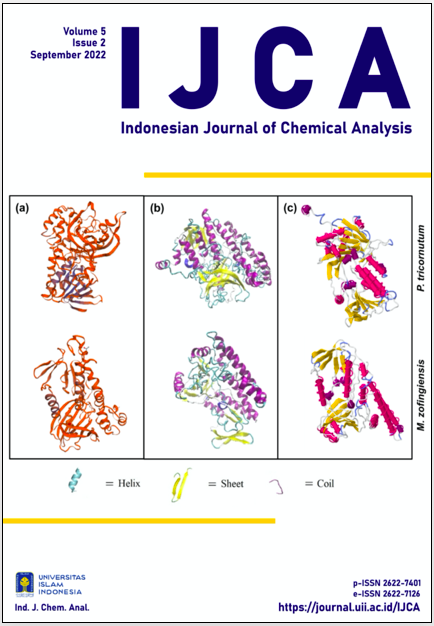Main Article Content
Abstract
Waste management at tourist sites is an unavoidable problem due to the massive number of visitors. One of the types of waste is polyethylene terephthalate (PET) plastic bottles. This study aims to analyze the potential use of PET for waste to energy in tourist areas. This research was conducted in a tourist area in Klungkung Regency, Bali Province. This study only uses grab sampling in measuring waste generation and composition. This research was conducted by proximate analysis and thermal gravimetry analysis (TGA). The measurement of waste generation shows that the PET produced is 1.24 kg/day, or about 43.5% of the total waste generation. Proximate analysis measurements show the value of moisture, ash, volatile, and fixed carbon content, which are 1.53, 0.14, 95.92, and 2.42, respectively. Meanwhile, the caloric value of PET waste is 22.71 MJ/kg. The residue from the TGA results showed 2.575%. The thermal degradation process starts at a temperature of 280ᵒC, and the initial temperature of degradation starts at 406 – and ends at 468ᵒC. Utilization of PET waste at this tourist location can also help the purpose of waste management in Klungkung Regency, namely implementing the Waste to Energy concept at the Local Waste Processing Facility (TOSS).
Keywords
Article Details
Copyright (c) 2022 Indonesian Journal of Chemical Analysis (IJCA)

This work is licensed under a Creative Commons Attribution-ShareAlike 4.0 International License.
You are free to:
Share — copy and redistribute the material in any medium or format
Adapt — remix, transform, and build upon the material for any purpose, even commercially
Under the following terms:
Attribution — You must give appropriate credit, provide a link to the license, and indicate if changes were made. You may do so in any reasonable manner, but not in any way that suggests the licensor endorses you or your use.
ShareAlike — If you remix, transform, or build upon the material, you must distribute your contributions under the same license as the original
No additional restrictions — You may not apply legal terms or technological measures that legally restrict others from doing anything the license permits




